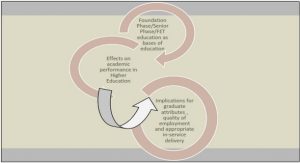Get Complete Project Material File(s) Now! »
Regarding the text of Leviticus 16, many scholars have attempted to find evidences of multiple layers in it and to explain the redactional history behind the present structure,112 in accordance with their approach to other portions of the Pentateuch. They have argued that some particular redactions have resulted in the present textual tensions and contradictions within Leviticus 16, while it displays the unique nature of the content, the vocabulary and the style. However, the present text of Leviticus 16 presents a well-organized structure, as demonstrated by our analysis of structure. This thesis is not interested in the historical development of the text, but in the present text. Therefore it does not investigate original strata of the text and their history. Rather, following several scholars who have argued for the structural unity of Leviticus 16,114 its systematic structure and the ritual logic arranged in it will be examined. Thereby it will be revealed that the organic combinations of rituals are integrated into a unified ceremony by the author’s minute ritual logic. Along with the exegesis, possible answers will be given to the seemingly self-contradictions and tensions in the text of Leviticus 16. Thus our study will demonstrate that this text contains highly-elaborated rituals, an outstanding literary structure, and a consistent theology of atonement associated with the ordinary hattat ritual in Leviticus 4:1-5:13, and 11-15. In the priestly literature, other texts referring to the Day of Atonement also appear: Leviticus 23:27-32; Numbers 29:7-11. 115 They seem to be supplementary and complementary prescriptions of the Day. Leviticus 23:27-32 supplement 16:29-32 with the warnings of ‘cutting off’ and ‘destruction’ and the strengthened exhortations about the observance of the Day, whereas Numbers 29:7-11 stipulates additional sacrifices apart from those of Leviticus 16.
The ritual of the Azazel goat (vv. 20-22): removal of the sins of Israel
After Aaron has finished the purgation of the whole sanctuary, he should perform the ritual of the Azazel goat as the third part of the ‘integrated atonement ritual.’ As stated, v. 20a has two functions: the concluding statement of the combined hattat ritual (vv. 6-19) and the introduction to the Azazel goat ritual (vv. 20-22). Thus the Azazel goat ritual starts with the confirmation of the sanctuary purgation. Now that some questions on the live goat and its ritual have already been discussed above, other issues in this section are as follows: (1) the meaning of the two-hand imposition on the live goat; (2) the transference of sins on it; (3) the interpretation of the triple evil terms in v. 16a and v. 21aβ159 in parallel; (4) the dynamics and function of the release rite to send the live goat into the wildness; and (5) the purpose of the Azazel goat ritual. These questions are not addressed here, but discussed in the next chapters, since the primary aim of this chapter is to inquire into the elaborated edifice of the unified ceremony as a whole performed on the Day and the unique integration and association of the rituals. Therefore, the focus is still on exploring the linking devices between the previous combined hattat ritual and the Azazel goat ritual.
Chapter 1. Introduction and Methodology
1.1. The aim of the thesis
1.2. Main issues
1.3. The approach to the texts
1.4. The aim of each chapter
1.5. Categories of the hattat offerings
1.6. The definitions of technical terms and phrases
Chapter 2. The definition of rP,Ki and its affiliated terms
2.1. Introduction
2.2. The definition of rP,Ki
2.3. The rP,Ki affiliated terms
2.4. Conclusion
Chapter 3. The Unified Ceremony of the Day of Atonement
3.1. Introduction
3.2. Structure of Leviticus 16
3.3. Section I: instruction of the ceremony (vv. 1-5)
3.4. Section II: the procedure of the ceremony (vv. 6-28): the unified ceremony of the Day of Atonement
3.5. Section III: calenderic instruction (vv. 29-34)
Chapter 4. Activity components of the hattat ritual (1): Ritual theory and Hand imposition
4.1. Introduction
4.2. General problems
4.3. Hand imposition in the hattat ritual
4.4. Conclusion
Chapter 5. Activity components of the hattat ritual (2): Blood manipulation and disposal of the flesh
5.1. Introduction
5.2. Blood manipulation in the hattat ritual
5.3. The disposal of the hattat flesh
5.4. Conclusion
Chapter 6. Sin, impurity, and contamination of the sanctuary
6.1. Introduction
6.2. Graded sins and impurities
6.3. Contamination of the sanctuary
6.4. Dynamics of the sanctuary contamination
6.5. Conclusion
Chapter 7. Hattat theories and the hattat of the Day of Atonement
7.1. Introduction
7.2. Major theories on the hattat mechanism
7.3. Atonement mechanism of the hattat ritual
7.4. Accomplishment of the Day of Atonement: National atonement and restoration of holiness
7.5. Conclusion
Chapter 8. Conclusion: atonement and holiness
8.1. Summarized conclusion
8.2. The Day of Atonement and holiness .






